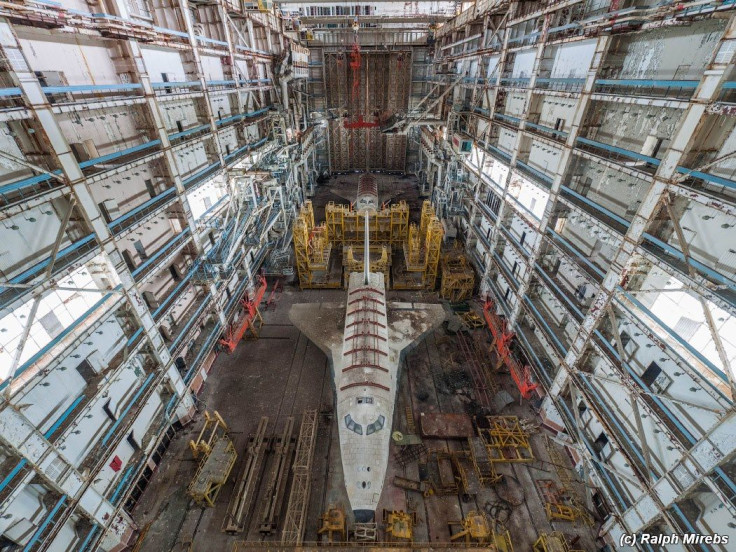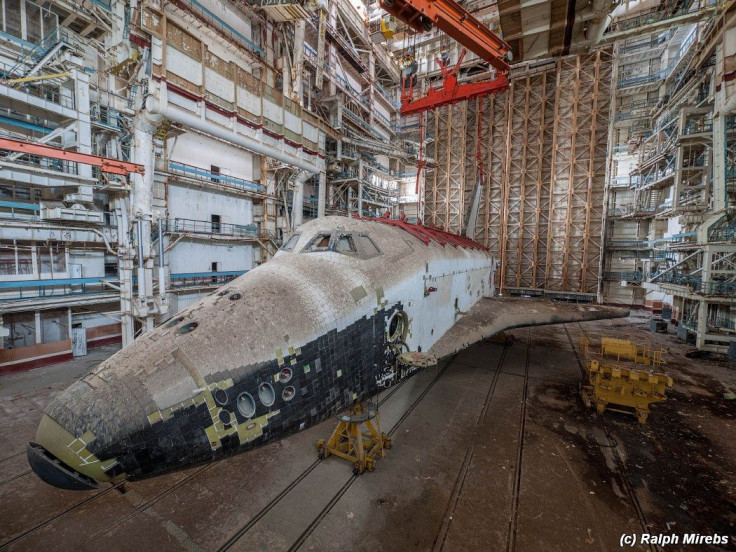Abandoned Soviet Space Shuttles Are Rotting Away In A Blast-Proof Hangar In Kazakhstan

The abandoned Soviet space shuttle program created as a response to NASA’s own program has been revealed in a series of images. Photographer Ralph Mirebs was able to capture the derelict hangar at Kazakhstan’s Baikonur Cosmodrome that houses the Buran orbiter in a photo essay on his website. Mirebs' photography covers a range of underground and military locations around the world.
According to Ars Technica, the Buran (Russian for “Blizzard”) program differed from NASA’s shuttle in that it used the Energia heavy-lift rocket for takeoff rather than the main engines used by NASA. Following one unmanned space flight in November 1988 -- in which Orbiter (OK)-1K1 made two orbits -- the program fell victim to budget cuts. Boris Yeltsin canceled the program in 1993 after the fall of communism, and the building that the orbiter was stored in collapsed during a 2002 earthquake. Eight people died, the first orbiter was destroyed and the second orbiter (OK-1K2) was moved to the Assembly and Fueling Complex pictured in Mirebs' essay.

The building is vast. At approximately 492 feet long, 262 feet wide and 230 feet high, the building is smaller than NASA’s vehicle assembly facility and the previous Buran holding site. Nevertheless, the sheer enormity of the building remains apparent in Mirebs' photographs. The facility is designed to withstand the blast of a fuel explosion, and its length is indicative of the Soviet approach to rocket construction: NASA’s Vehicle Assembly Building is tall to allow for building rockets upright, while the Soviets built theirs sideways.
The Baikonur Cosmodrome is the world’s largest operational launch site, but the abandoned fueling complex remains a testament to the former space race.
© Copyright IBTimes 2024. All rights reserved.





















